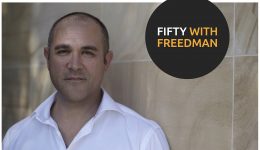CONSCIOUS SELLING (PART 1)
All effective businesses have a strong team of salespeople. It’s vital for 99% of businesses today. Because without customers who want to buy your products or services, the cash flow dries up and the doors of the business close. This is not rocket science. In this article, we’ll explore some of the behaviours, skills and tools which help sales people to fly. Ten years ago, I started teaching a range of programs to develop sales team capabilities with advanced rapport building skills. To become great at anything you need to understand both the parts and the whole, so as part of the program, I built the map above to illustrate both the parts of the sales process and the whole thing together.
The first distinction to make is between the product / service and the relationship / communication. The product or service is what you are selling. For now, let’s put aside product knowledge as really that’s your business. If you have a product or service which you want your people to sell, make sure you spend enough time teaching them the ins and outs of it. That way they can answer all their prospects questions in a meaningful way to build rapport and trust. This is a given.
TEN CAPABILITIES
In this article, let’s focus on the relationship and manner in which the sales person communicates with the customer. When two people come together and have a conversation lots of very interesting things happen and the more conscious your sales people are of these different elements, the easier it becomes for them to adapt their behaviours to build rapport and negotiate better outcomes. There are ten primary capabilities to develop in order to land more sales results.
1 Understand human behaviour.
A key part of selling is adaptability. Sales people who have a one size fits all approach to selling rarely succeed in the long term. We are very complex beings, and all have a wide range of buying desires, preferences and behaviours. It’s vital that sales people develop sufficient levels of both self awareness and other awareness, to know how they are different from their customers. People are more likely to buy from sales people who match and mirror their behaviour, because it makes them feel more comfortable in the conversation, which relaxes them and opens them up to hear what the sales person has to say. There are a range of great tools which can illustrate our differences. My favourite tool for sales people is DISC, which I’ve taught to over 2000 people. DISC explains the 4 primary dimensions of human behaviour then goes on to show sales people how to build rapport with all 4 types. You can download a sample DISC sales profile here.
2 Grab the customers attention quickly.
We live within a saturated market place where everyone is vying for our attention. I heard a CEO of a media sales business describe this phenomena a few years ago as the fight for attention and it summaries one of the big challenges sales people face today. You need to stand out, but how do you do that in a world where most people are on overload already. To do this you need to get an idea of a tangible benefit of why the customer should give you any of their precious attention. This is done by crafting a powerful, sharp statement of how you plan to make a difference to them. And you will probably need a few of these up your sleeve as what people want can vary.
3 Acquiring quality information about the customers needs.
No-one is ever going to buy something from you unless they have a need for it. And so you’re job is simple. Ask questions to uncover what their needs are, and if you have a product or service which matches their needs, then tell them about it and see if they want to try it out. Simple. So develop a series of great questions which will get your customers talking about their needs. I delve very deeply into the structure and design of powerful questions in my create results program, but for now, simply know that you want more open questions (who, what, where, when, how and why) than closed ones (did, will, have, can). You can download a learning module on how to design powerful questions here.
4 Close your mouth (yes really I mean it!)
I’m not going to say anything more about this, except, zip it. If you haven’t already heard the old joke about why you were given two ears and one mouth, then it’s simple. It’s so that you can hear twice as much as you speak. If you’re a highly extroverted character (I behaviour on the DISC profile) who loves to talk, then I suggest you practice just listening to people for 5 minutes without saying a word. Writing notes can sometimes help people like this externalise their thinking without interrupting their customers flow.
This article is one of two on the same topic. To continue reading click here. And if you want to find out more about how I can teach your sales people how to fly, get in touch here.




















